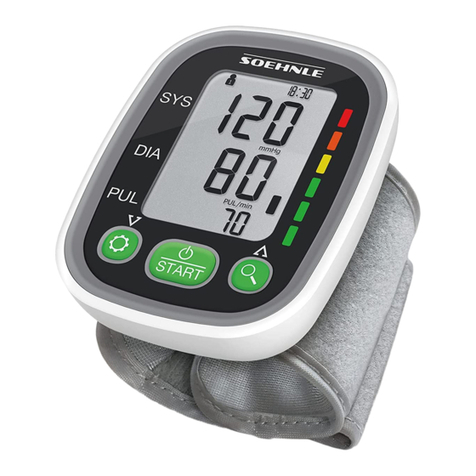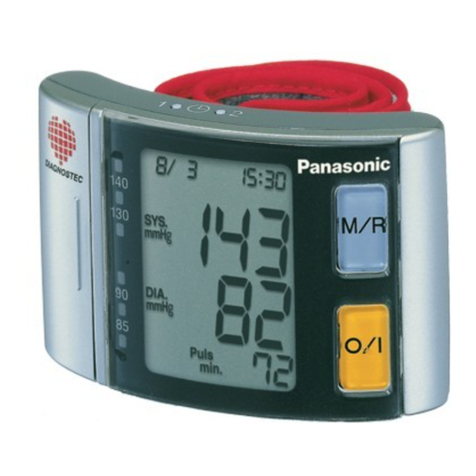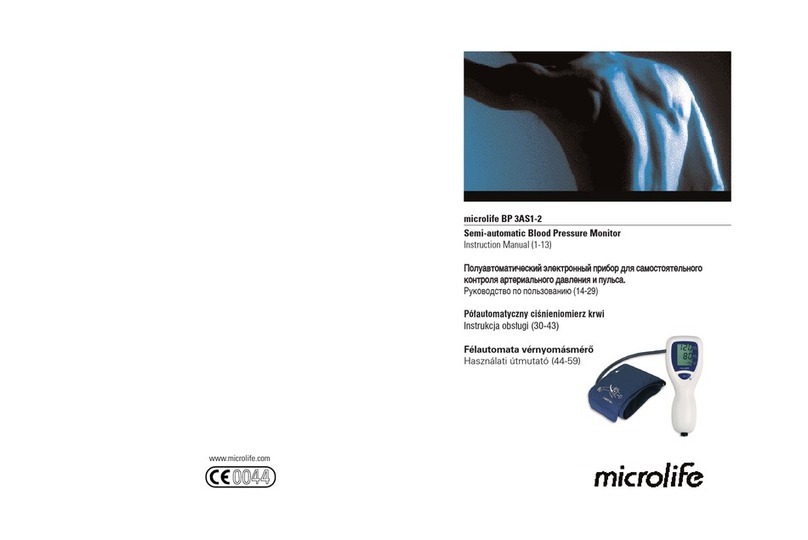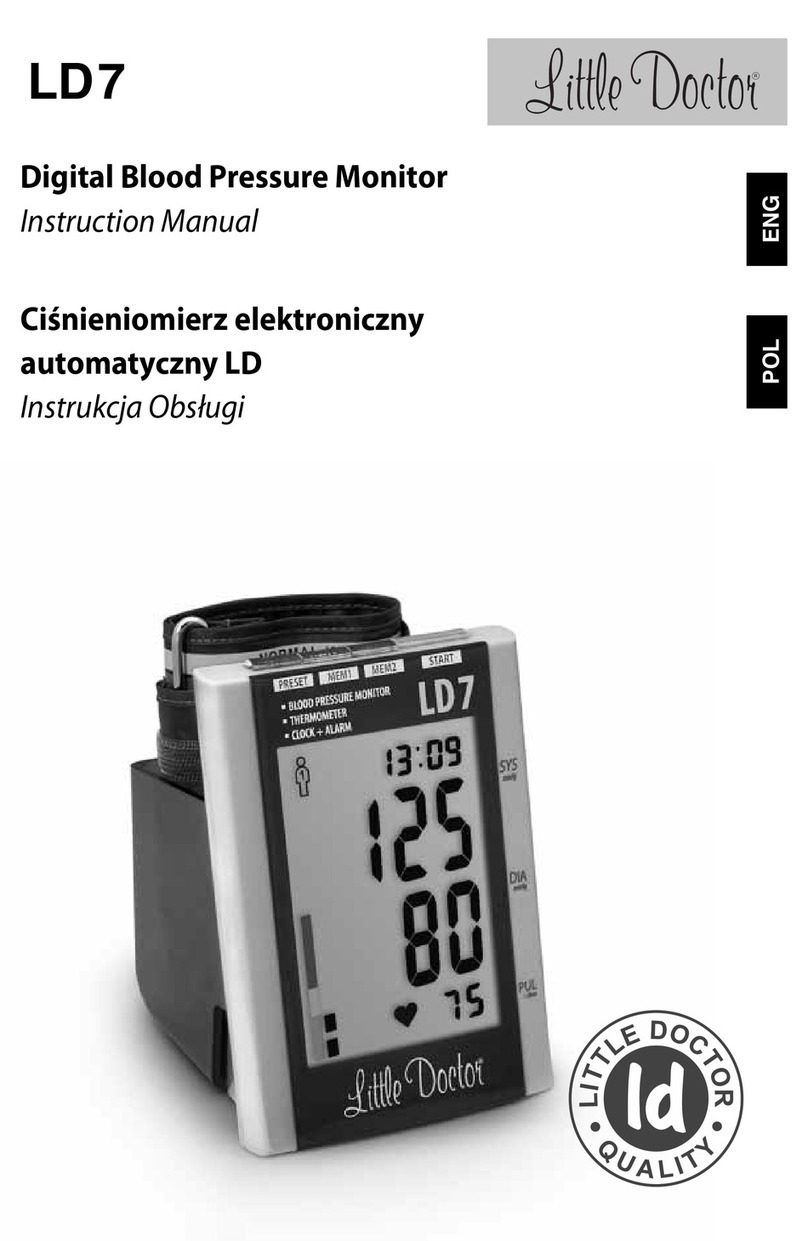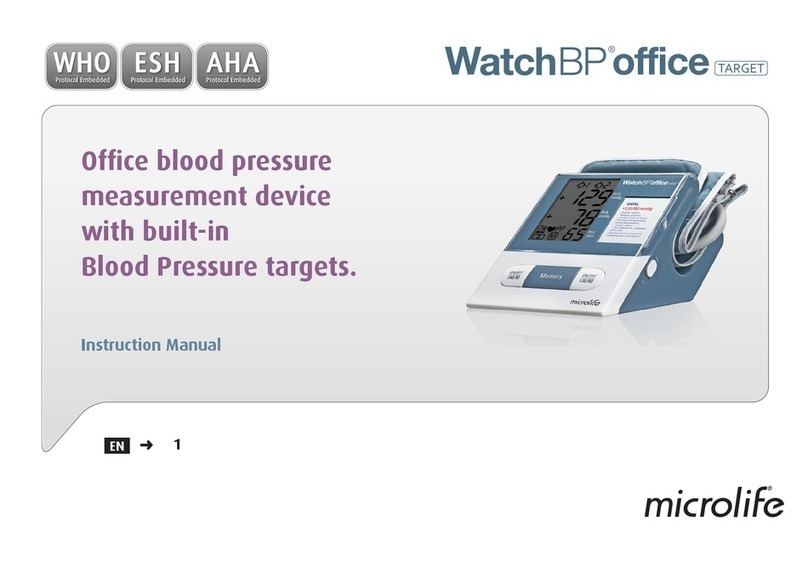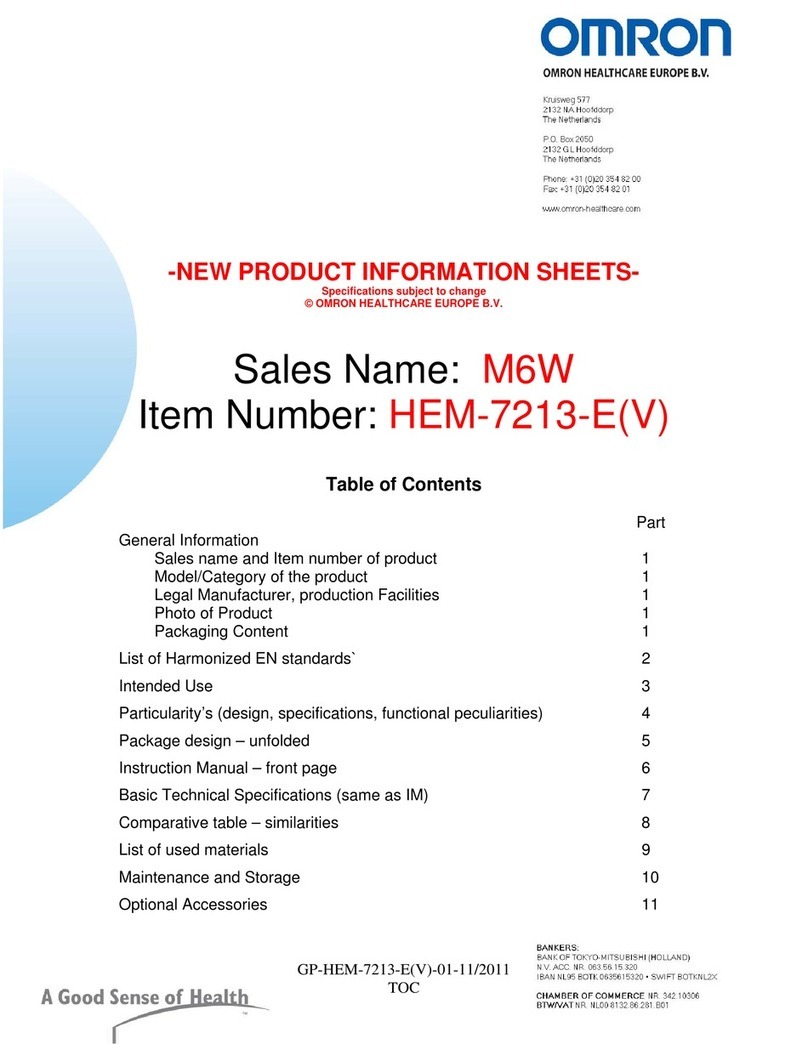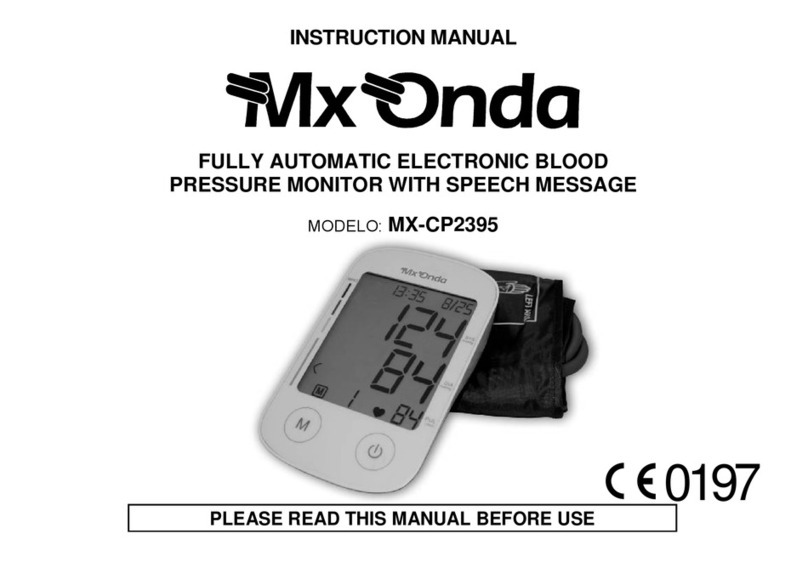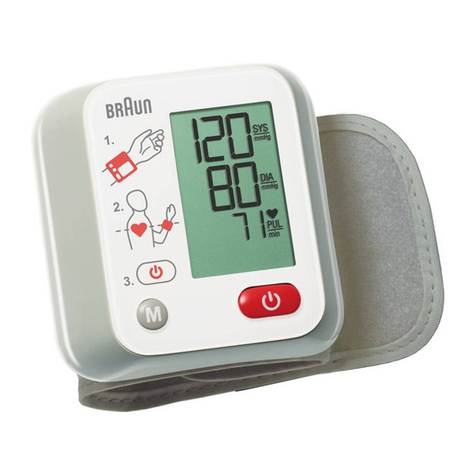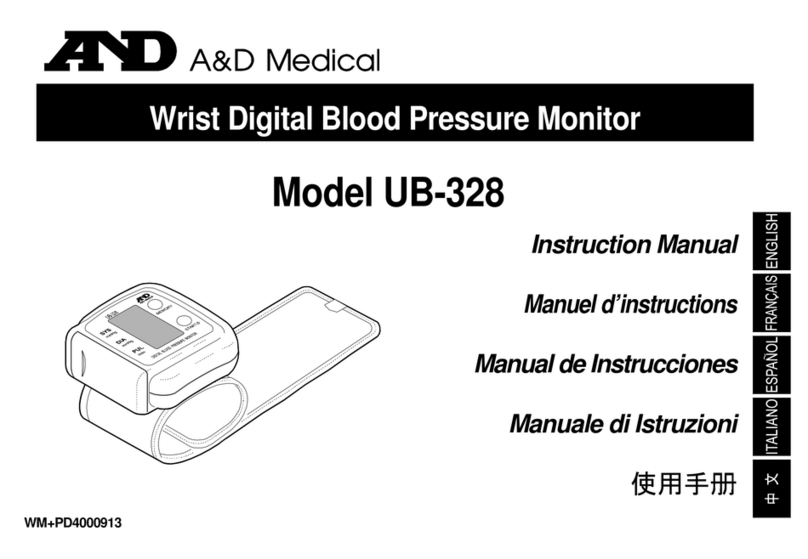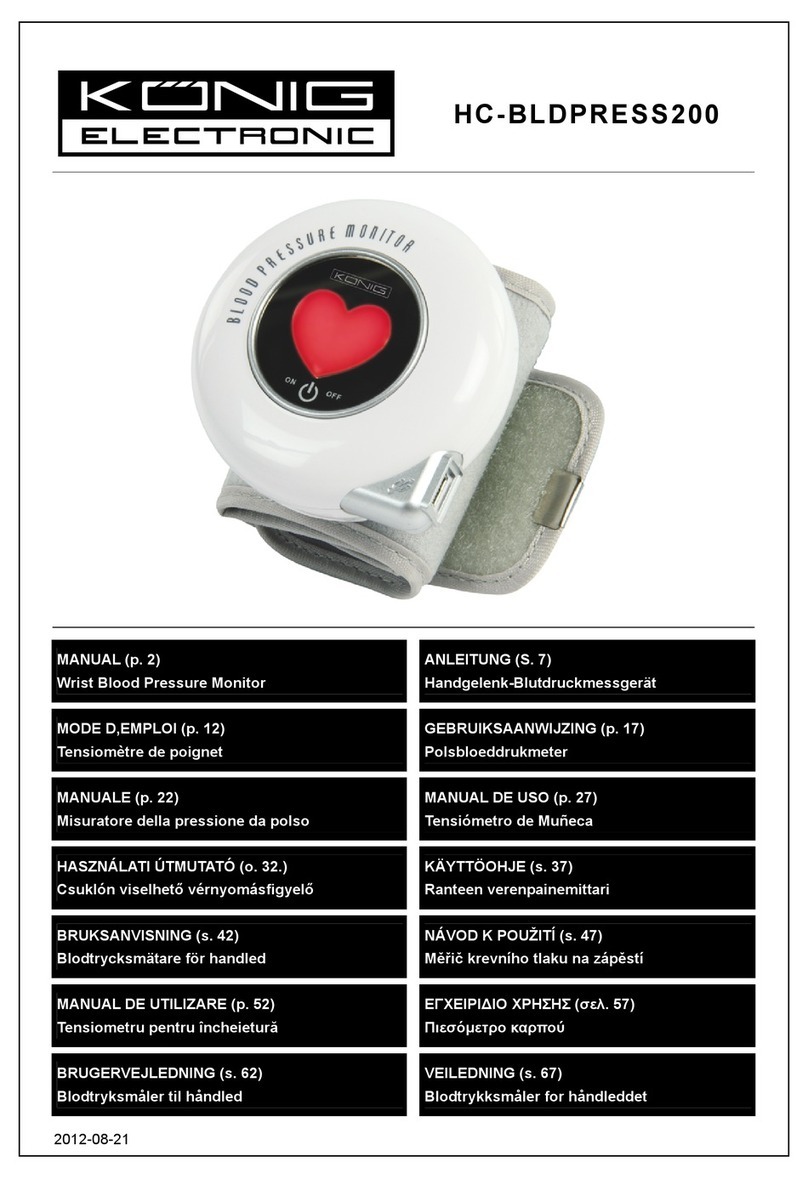
6ENGLISH
ENGLISH
Thank you for choosing our product. Before using the appliance, and to ensure the best use,
please read these instructions carefully.
The safety precautions listed here reduce the risk of re, electric shock and injury when pro-
perly followed. Keep the manual in a safe place for future reference, as well as the warranty,
sales receipt and carton. If applicable, give these instructions to the future owner of the
appliance. Always follow basic safety instructions and hazard prevention measures when
using an electrical appliance. The manufacturer shall not be liable for any damage resulting
from the user’s failure to follow these instructions.
This is an automatic digital blood pressure measuring device for adults, for application on
the upper arm, for use at home or in the doctor’s ofce. It provides fast and reliable measure-
ment of systolic and diastolic blood pressure and pulse rate using the oscillometric method.
This device offers a clinically proven degree of accuracy and its design makes it easy to use.
When using any electrical appliance, the following basic safety pre-
cautions should always be observed.
•
Not suitable for use in newborns, children and pregnant women.
•
This device should not be used near high frequency surgical
equipment.
•
Only a health professional is trained to interpret blood pressure mea-
surements. It is recommended that your physician review your proce-
dure for using this device.
•
Blood pressure readings obtained by this device should be veried
before prescribing or making adjustments to any medication used to
control hypertension. Under no circumstances should you alter the
doses of any medication prescribed by your doctor.
•
This device is NOT intended to replace regular medical checkups.
•
This monitor is designed for adult use only. Consult a physician be-
fore using this instrument on a child.
•
In case of irregular heart rhythm (arrhythmia), the measurements
made with this instrument should be evaluated by medical consul-
tation.
•
Carefully read the section “Important information about Blood Pres-
sure and its measurement”. It explains the dynamics of blood pressu-
re readings and will help you get more accurate results.
•
This product, including its accessories, must be processed and dis-
posed of in accordance with local regulations once it has reached the
end of its life cycle.
•
This device contains sensitive electronic components. Avoid strong
electric or electromagnetic elds in the direct vicinity of the device
(eg mobile phones, microwave ovens) during use. These can lead to
erratic results.
SAFETY MEASURES


